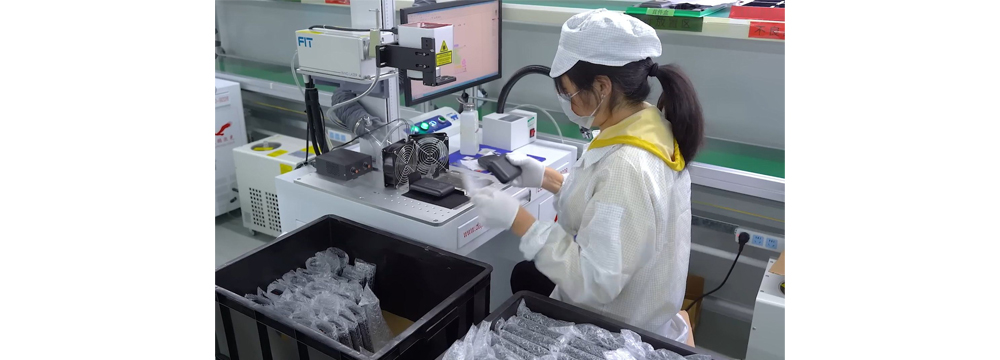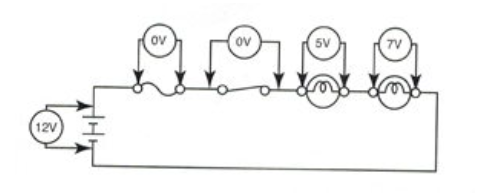DC power supplies are widely used in various fields, but we may sometimes notice voltage drops during use. Why? Today, let's understand the real reasons.
1. Definition of DC Power Supply
A DC power supply is a device that maintains a constant voltage and current in a circuit. Examples include dry cell batteries, storage batteries, and DC generators.
A DC power supply has two electrodes, positive and negative. The positive electrode has a higher potential, while the negative electrode has a lower potential. When these two electrodes are connected to a circuit, they maintain a constant potential difference between the two ends of the circuit, thus creating a current from the positive electrode to the negative electrode in the external circuit. A DC power supply is an energy conversion device that converts other forms of energy into electrical energy to supply the circuit, maintaining a steady flow of current.

2. Basic Principles
A constant flow of water cannot be maintained by simply adjusting the water level. However, a pump that continuously pumps water from a lower location to a higher location can maintain a constant water level difference and thus a steady flow. Similarly, the electrostatic field generated by electric charges alone cannot maintain a steady current. However, with the help of a DC power supply, non-electrostatic interactions (abbreviated as "non-electrostatic forces") can be used to return positive charges from the lower potential negative electrode through the power supply's internal structure to the higher potential positive electrode, maintaining the potential difference between the two electrodes and thus generating a steady current.
There are many types of DC power supplies, and the nature of the non-electrostatic forces and the energy conversion processes vary among these types. In chemical batteries (such as dry cells and storage batteries), non-electrostatic forces are chemical reactions associated with the dissolution and deposition of ions. During discharge, chemical energy is converted into electrical energy and Joule heating. In thermoelectric power sources (such as metal thermocouples and semiconductor thermocouples), non-electrostatic forces are diffusion reactions associated with temperature differences and electron concentration differences. When a thermoelectric power source supplies power to an external circuit, thermal energy is partially converted into electrical energy. In a DC generator, the non-electrostatic force is electromagnetic induction. When a DC generator supplies power, mechanical energy is converted into electrical energy and Joule heating. In photocells, the non-electrostatic force is the photovoltaic effect. When a photocell is powered, light energy is converted into electricity and Joule heat.
3. Why does voltage drop occur during DC power supply use?
A voltage drop (VD) occurs when the voltage at the end of a cable is lower than at the beginning. Any length or size of wire has some resistance, and current passing through this DC resistance causes a voltage drop. As cable length increases, its resistance and reactance increase proportionally. Therefore, VD is particularly problematic for long cable runs, such as those in larger buildings or on larger properties like farms. This technique is commonly used when properly sizing conductors in any single-phase line-to-line circuit, and can be measured using a voltage drop calculator.
Cables carrying current always have an inherent resistance, or impedance, to the current. VD refers to the amount of voltage lost across the entire circuit or portion thereof due to the cable's "impedance" (measured in volts).
Excessive VD within a cable's cross-sectional area can cause lights to flicker or burn dimly, heaters to heat poorly, and motors to run hotter than normal and burn out. This condition causes the load to work harder, resulting in less voltage to push the current.

4. How to Fix DC Power Supply Voltage Drop?
To reduce VD in a circuit, you need to increase the size (cross-section) of the wire—this is done to reduce the overall resistance of the cable length. Of course, larger copper or aluminum cable sizes increase cost, so it's important to calculate VD and find the optimal wire size that will reduce VD to a safe level while maintaining cost-effectiveness.
5. How to Calculate Power Supply Voltage Drop?
VD is the voltage loss caused by current flowing through resistance. The larger the resistance, the greater the VD. To check VD, use a voltmeter connected between the points where you want to measure VD. In DC circuits and AC resistance circuits, the sum of all voltage drops across series loads should equal the voltage applied to the circuit (Figure 1).

Each load device must receive its rated voltage to operate properly. If insufficient voltage is available, the device will not function properly. You should always ensure that the voltage you are measuring does not exceed the range of the voltmeter. This can be difficult if the voltage is unknown. If so, always start with the highest range. Attempting to measure a voltage higher than the voltmeter can handle can damage it. Sometimes, you may need to measure the voltage between a specific point in a circuit and ground or a common reference point. To do this, first connect the voltmeter's black common test probe to the circuit ground or common wire. Then connect the red test probe to any point in the circuit you want to measure.
To accurately calculate VD for a given cable size, length, and current, you need to know the resistance of the cable type you're using. However, AS3000 outlines a simplified method that can be used.
The following table is excerpted from AS3000 – it specifies "Am/Vd" (amperes per meter per percentage voltage drop) for each cable size. To calculate the circuit's VD as a percentage, multiply the current (amperes) by the cable length (meters); then divide the ohms by the value in the table.
For example, a 30-meter-long 6mm² cable carrying 32A across three phases will result in a 1.5% voltage drop: 32A x 30m = 960Am/615 = 1.5%.
Share our interesting knowledge and stories on social media














